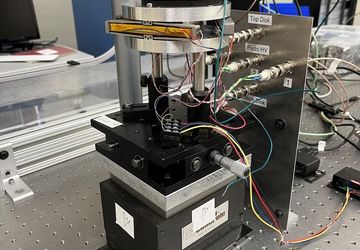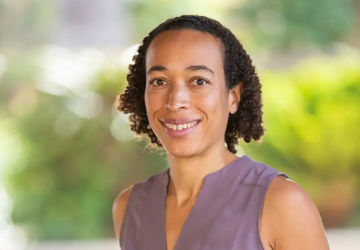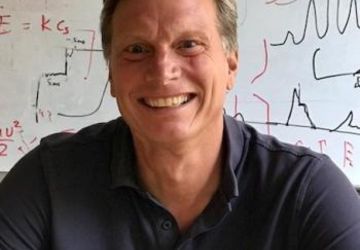Atomic, Molecular and Optical Physics

Examining and manipulating matter at the scale of the atom and molecule. Attosecond to femtosecond processes, quantum properties of atoms and photons, testing fundamental physics.
Research in atomic, molecular, laser and X-ray physics at Stanford takes place in the Physics and Applied Physics Departments and in the Photon Science Department at SLAC National Accelerator Laboratory. A rich set of topics are explored in the Varian Physics Laboratory, the Ginzton Lab and through the PULSE Institute for Ultrafast Energy Science. SLAC houses both the Stanford Synchrotron Radiation Lightsource and the Linac Coherent Light Source.
The structure and dynamics of matter at the atomic scale -- from Angstroms to nanometers in space and attoseconds to femtoseconds in time -- are studied using strong laser and x-ray fields to control and probe the quantum evolution of atoms and molecules. Basic questions in atomic physics are addressed through measurements of "simple" atoms, often laser-cooled and at the quantum-measurement level, leading to applications in real-world systems. Precision control of lasers and atoms are used for tests of space-time, advanced optical clocks, ultra-fast timing, atomic sensors, and ultra-sensitive detection of trace atoms. Quantum sensors of rotation and acceleration based on cold atoms (quantum metrology) are being developed for tests of general relativity, the investigation of many-body quantum effects in Bose-condensed vapors, and ultra-fast laser-induced phenomena. Other efforts aim to create and study novel quantum many-body systems, including quantum soft matter, using new techniques developed for creating and manipulating exotic dipolar ultracold atoms in optical lattices, near cryogenic surfaces, and inside multimode optical resonators. This research aims to elucidate the interplay between superfluidity, crystallinity, and magnetism to provide better intuition about the organizing principles of strongly interacting matter. Future efforts at Stanford will focus on the generation and detection of highly entangled many-body states of ultracold atoms, primarily using techniques of cavity QED, the exploration of quantum critical phenomena and routes to topological encoding of quantum information.
Related Faculty
Related News

Part of an experimental setup being built at Stanford University that will measure gravity down to submicron scales using nuclear spectroscopy. Courtesy Giorgio...
Source: Simons Foundation, Gordon and Betty Moore Foundation
Physics breakthroughs don’t…

Photo: Harrison Truong/Stanford University
Monika Schleier-Smith, a 2020 MacArthur Fellow and associate professor of physics, talks with…

Photo: Harrison Truong/Stanford University
Source: New Scientist
SPACE-TIME may not be fundamental. Instead, according to the…

Stanford and SLAC National Accelerator Laboratory faculty members KC Huang, Agostino…

Guest Monika Schleier-Smith is a physicist who says that quantum principles, like entanglement,…

How many times have you shown up to a video meeting with people at work only to find you have…








